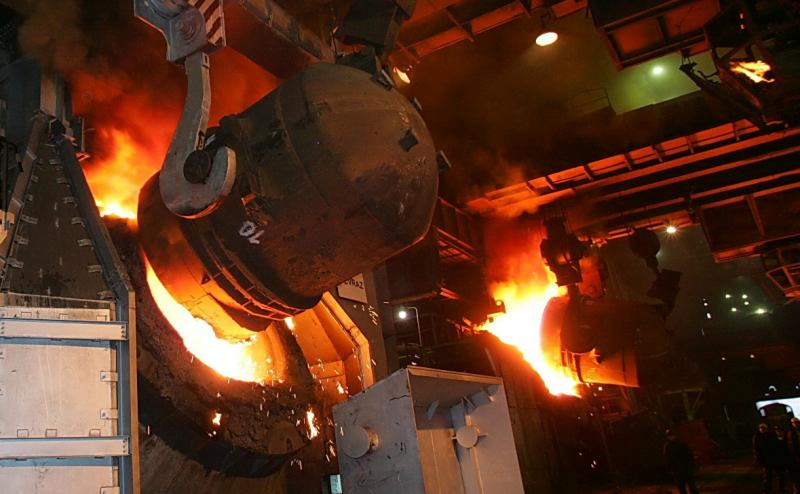What is the Difference between Converter Furnace Steelmaking and Electric Arc Furnace Steelmaking?
Converter Furnace Steelmaking
The converter furnace body can rotate, with a steel plate as the shell and refractory material as the lining. There is no need for additional heating during converter steelmaking because the molten iron is high temperature and the heating oxidation reaction continues inside it. This reaction comes from silicon, carbon in molten iron, and oxygen blown in.
Because it does not need to be heated with fuel, it reduces energy consumption, so it is widely used in steelmaking. After the oxygen blown into the furnace reacts with the carbon in the molten iron, the carbon content in the molten iron will be reduced and become steel.
This reaction itself will give off heat, so the molten iron will not only continue to melt but may become hotter and hotter. Therefore, in order to adjust the suitable temperature of molten iron, people will add some scrap steel and a small amount of cold pig iron and ore.
At the same time, some lime, quartz, fluorite, etc. should also be added. These substances can form slag with the waste generated when molten iron turns into molten steel. Therefore, they are called slagging materials.
Converter steelmaking process: blast furnace hot metal → hot metal pretreatment → combined blowing converter steelmaking → out-of-furnace refining → continuous casting → hot rolling
Electric Arc Furnace Steelmaking
The heat source of electric arc furnace steelmaking is the electric energy recorder. There are electrodes made of graphite in the electric arc furnace. A strong arc can be emitted between the end of the electrode and the charge, which is similar to the lightning we see and has extremely high heat energy.
We know that during steelmaking, the carbon in the molten iron is mainly oxidized to reduce the carbon content, but when some steel varieties need to contain some other elements that are easy to oxidize if too much oxygen is blown in, those elements will also be oxidized. At this time, using an electric arc furnace to make steel is much superior.
Therefore, an electric arc furnace is often used to smelt alloy steel and carbon steel. The electric arc furnace is mainly made of waste steel. After the charge is loaded, the furnace cover will be covered, and then the electrode will fall close to the charged surface. When the power is turned on, the electrode will send out an arc to melt the charge near the electrode. Then increase the voltage to accelerate the melting speed.
With the melting degree of the charge, the position of the charge (molten steel) will change. At this time, the electrode will automatically adjust the height without being submerged in the molten steel. When steelmaking with an electric arc furnace, some oxygen should also be blown in to speed up the melting rate. The time of oxygen blowing must be accurate, otherwise, it will explode.
When the charge will be completely melted, a layer of slag will float on the surface of the molten steel. At this time, the workers will take out some molten steel and slag to analyze their composition and see how the steel is refined.
If there are elements harmful to the quality of steel, continue refining to get rid of them.

